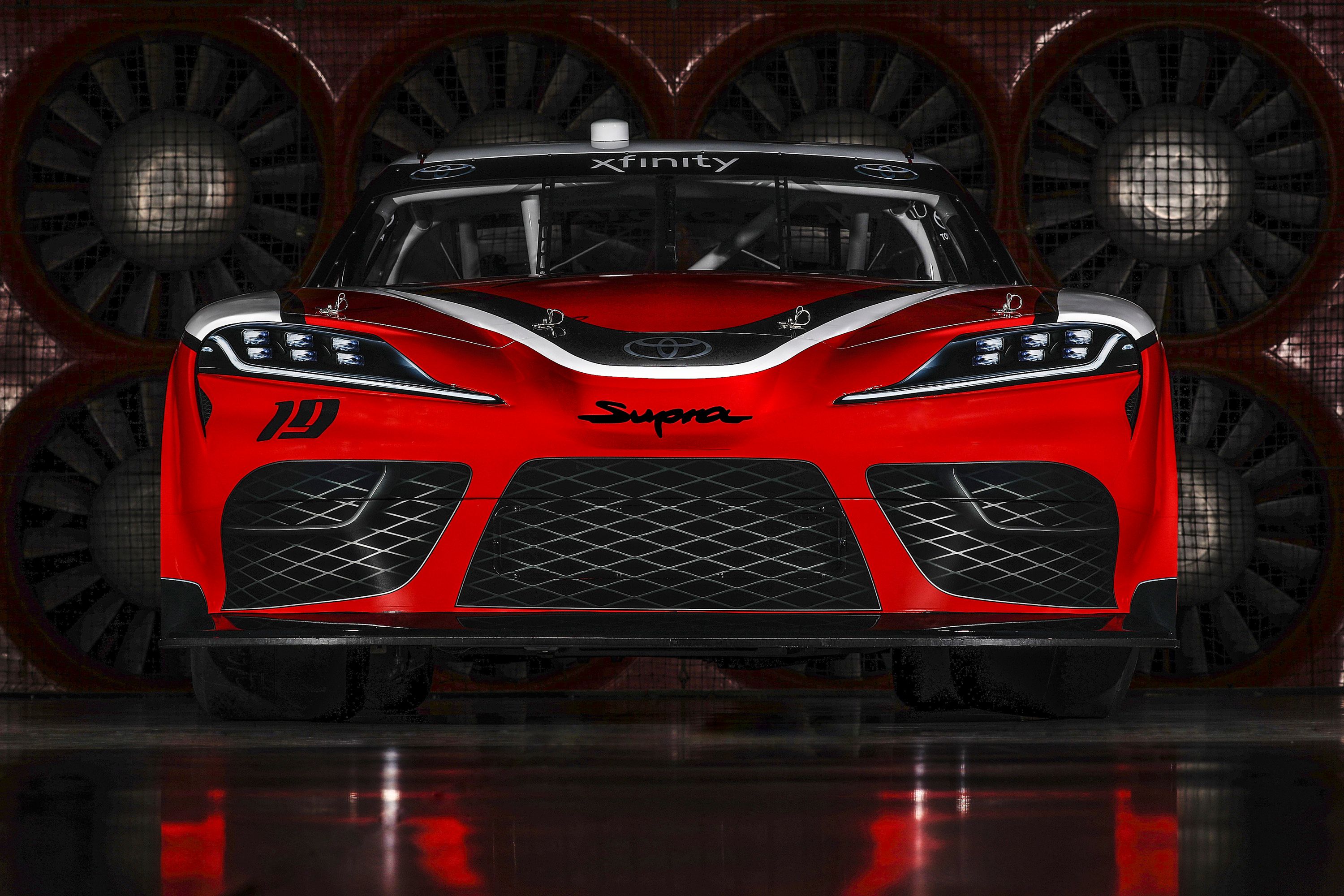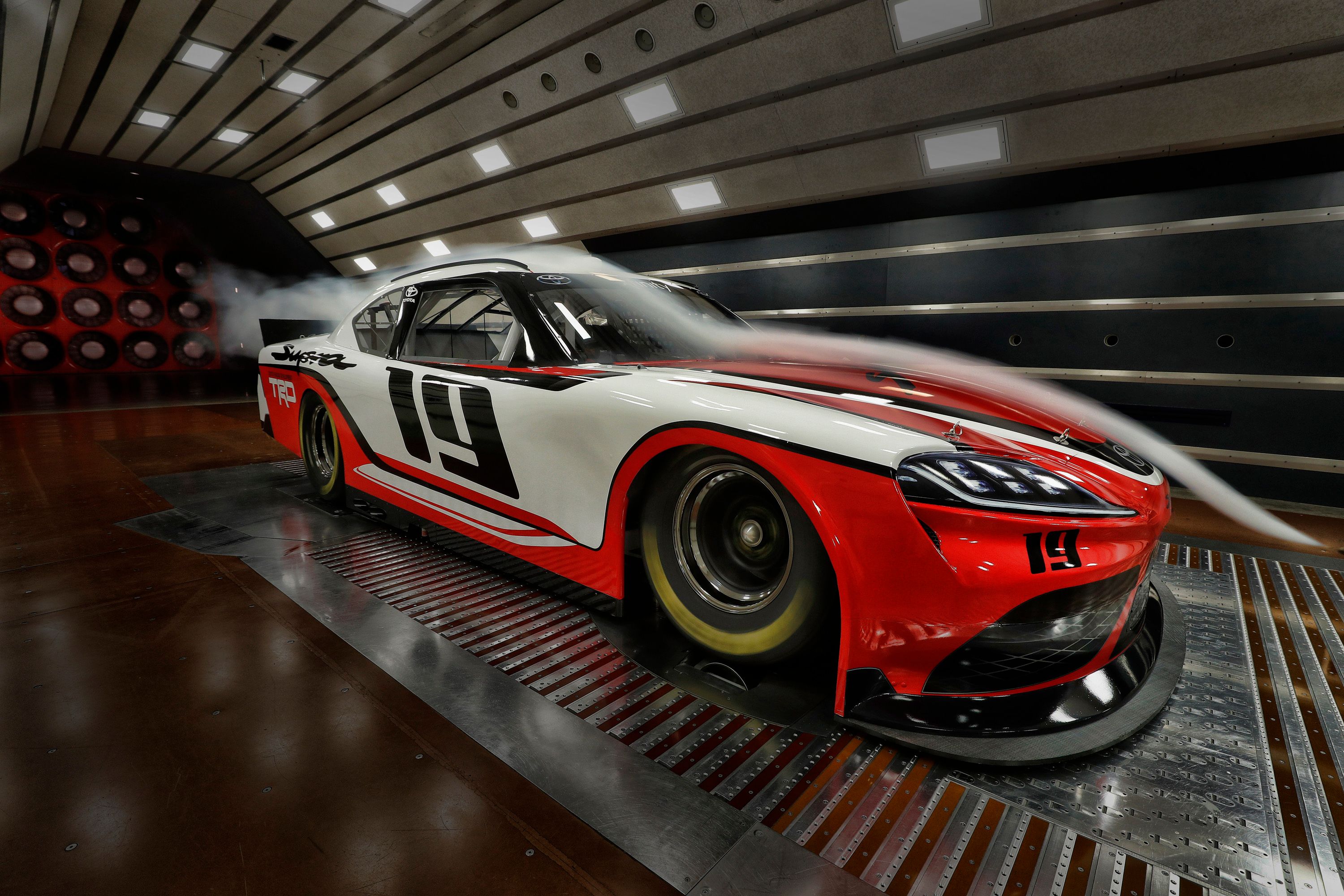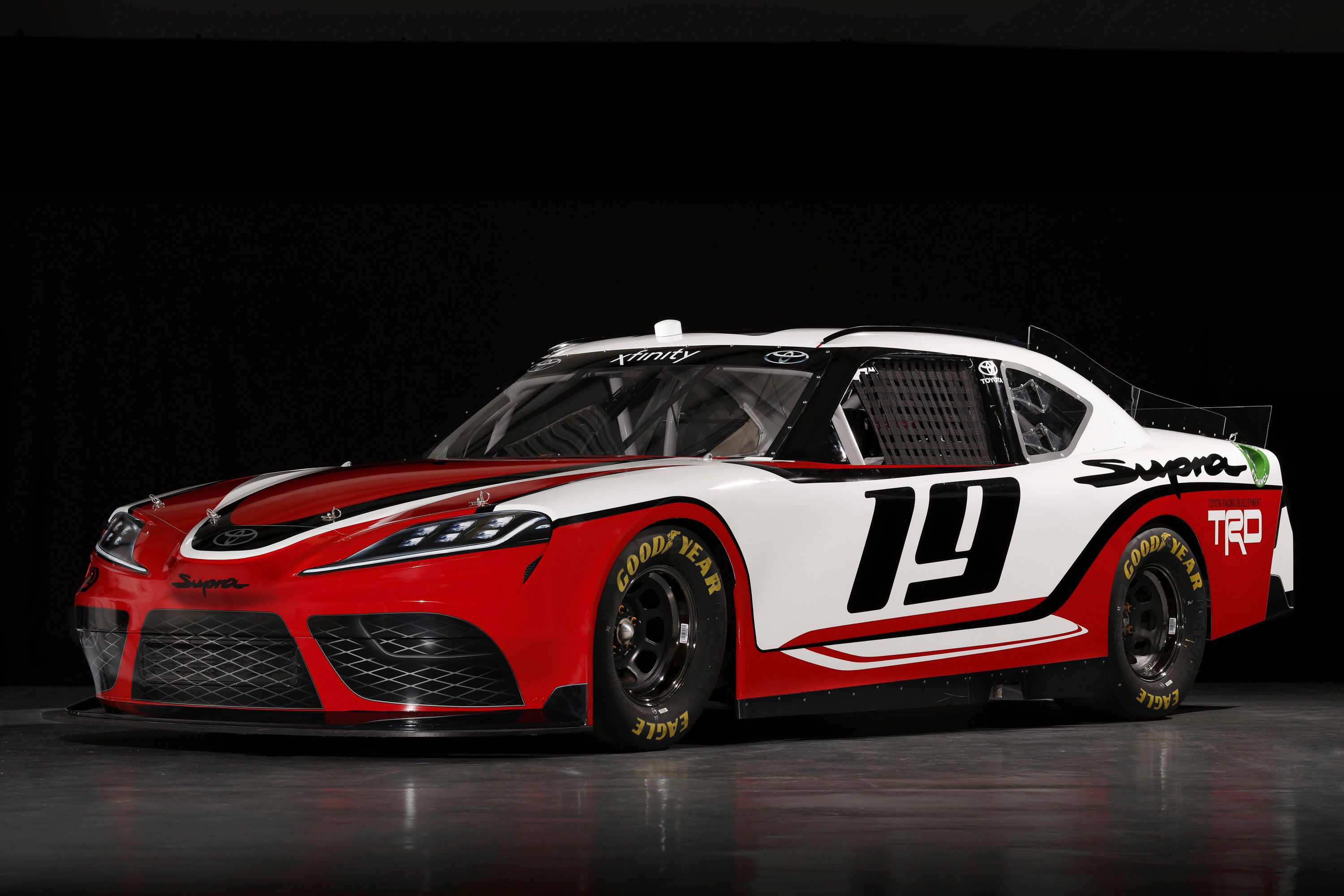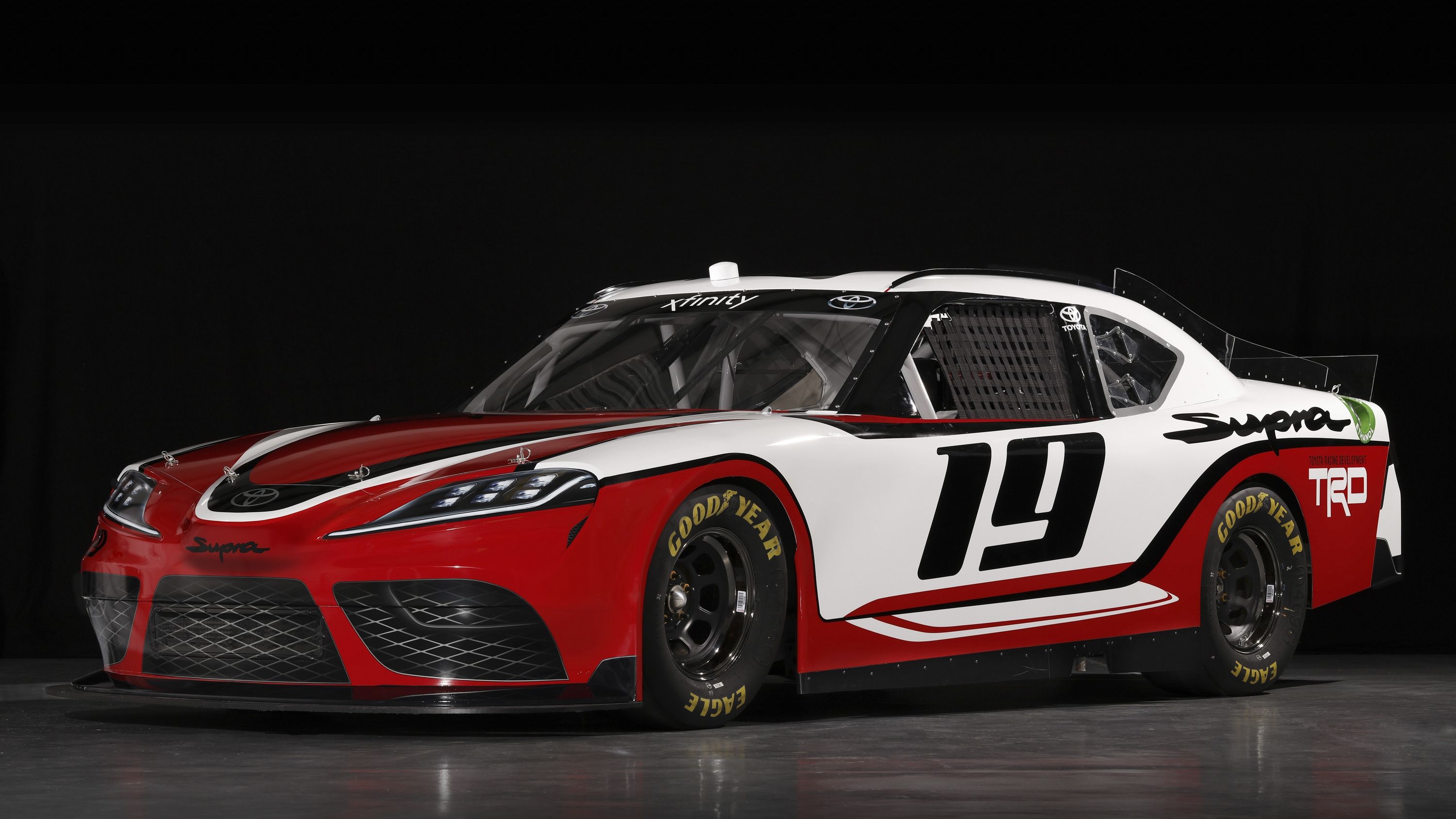The Toyota Supra is set to return to the market after a 16-year absence. Rumored for many years and teased since 2017, the Supra will make its public debut later in 2018, but Toyota has already introduced a couple of race cars. We've seen the first one in the form of an FIA-spec concept at the 2018 Geneva Motor Show, while the second one is a somewhat surprising entry in the NASCAR Infinity series.
Unveiled ahead of the Coke Zero Sugar 400 at the Daytona International Speedway, the Supra replaces the Camry in the Xfinity Series starting in 2019. The Camry-based race car leaves the series after ten competitive years, during which it won four manufacturer championships, two driver titles, and 147 wins as of 2018. This is the first time when the Supra name will be used in any NASCAR series.
Continue reading to learn more about the Toyota Supra NASCAR race car.
2019 Toyota Supra NASCAR Race Car
- Make: Array
- Model: 2019 Toyota Supra NASCAR Race Car
Toyota Supra NASCAR Exterior
Being a NASCAR vehicle, this racer isn't an actual Supra. The body is identical to all the other cars from this series, with only the graphics and minor changes to the nose setting it apart.
As usual, everything from the grille and headlamps to the taillights and rear diffuser are part of the livery, being painted on the NASCAR-regulated body. However, Toyota managed to include some of the Supra's trademark features quite nicely.
The nose is very similar to the concept car from Geneva, as is the three-piece grille in the bumper. The headlamps are also replicated nicely, including the thin LED strip that runs toward the nose and the six individual square lights.
Onto the sides, there's not much to talk about. Although they are aerodynamically optimized, NASCAR cars are almost featureless if you ignore the rear fenders. The Supra is no exception from this rule and looks nothing like the real thing. The roof is much boxier, the side skirts are flat, which the wheels are obviously of the slick, race-spec variety.
The rear section is obviously a big box with a pointy character line in the middle of the fascia and a big spoiler that sits almost vertically at the edge of the decklid. But Toyota painted the Supra's taillights, as well as the sports car's F1-inspired diffuser, which gives the racer a more colorful look.
The presentation model is finished in a white, red, and black livery, Toyota's main racing livery, but look for a range of different colors coming from various teams on the race track.
Toyota Supra NASCAR Interior
As it usually happens, Toyota did not release photos of the interior. But this isn't an issue really as NASCAR cockpits are usually identical. Naturally, the race car has nothing in common with the actual Supra. Instead, it uses a simple dashboard with traditional gauges, various switches, and a simple steering wheel.
A race-spec seat keeps the driver in place in case of a crash, while the passenger side is empty, hosting part of the roll cage and the ventilation system. There's nothing much to see inside a NASCAR car, really, as the cockpits are very spartan compared to vehicles from other racing series.
Toyota Supra NASCAR Drivetrain
There's no specific info about the drivetrain, but we already know that NASCAR race cars use similar engines. In the Xfinity Series, the cars ride on steel tube frames with integral safety roll cage and draw their juice from a carbureted, 5.8-liter, pushrod, V-8 engine. Paired to a four-speed manual transmission, these engines crank out between 650 and 700 horsepower and 520 pound-feet of torque when not restricted.
Unfortunately for us gearheads, race-spec Supras are the only ones that will get V-8 engines.
Toyota Supra NASCAR Competition
The Xfinity Series is also disputed by cars based on the Ford Mustang and Chevrolet Camaro. Both are built the same way, with features from the road cars painted on the standard NASCAR bodies. Drivetrains are identical for all vehicles, so both the Mustang and the Camaro use the 5.8-liter, pushrod, V-8. The Mustang has been used in this series since 2010, when it replaced the Fusion, while the Camaro joined in 2013 as a replacement for the Impala.
Conclusion
The fact that Toyota replaced the Camry with the Supra might not be a big deal performance-wise. The cars will be the same outside of small changes to the body and the livery, so it's still up to the teams and the drivers to bring the point home. The switch is more of a marketing move, as the Supra needs all the hype it can get before its official launch in the United States
Further reading
Read our full speculative review on the 2019 Toyota Supra.
Read our full review on the 2018 Toyota GR Supra Racing Concept.
Read more Toyota news.







